Announced in Q4 1992, the A260 was a continued effort from Areal Technology to produce industry leading glass-platter 2.5″ hard disk drives. Perhaps it’s no surprise that Areal stand as a historically significant manufacturer, yet one which isn’t remembered by the major public. Given the rarer nature of their drives, finding one in working condition is quite a challenge, but fortunately this one delivers almost 30 years later.
The end of 1995 was certainly closing in on Areal’s final days in the industry.

Drive Attributes ------------------------------------- Areal Technology A260 ------------------------------------- Capacity 260MB Mfc Date 1995-12 (week 50) Format 2.5" Height 15mm Interface PATA Platters 2 Heads 4 Cache 32KB RPM ~3000 Origin Japan (TTS) -------------------------------------
The A260 was Areal’s highest-end offering with its release, offering two platters in total. A single platter variant was also available, but is seemingly as uncommon as this model. Curiously, Areal went for a 15mm form factor, as opposed to the more standard 19mm, 17mm or 12.5mm options at the time.

The label doesn’t provide a lot of information, aside from the point that it looks quite nice. The manufacture date is quite clear, being from week 50 of 1995. Aside from that, the standard CHS values are noted, but nothing in the region of capacity or spindle RPM is present.
With this drive being designed by Areal Technology in the USA, manufacturing was outsourced to TTS (Sanyo) in Japan. Tomen Devices Corporation acquired Areal Technology in 1993.



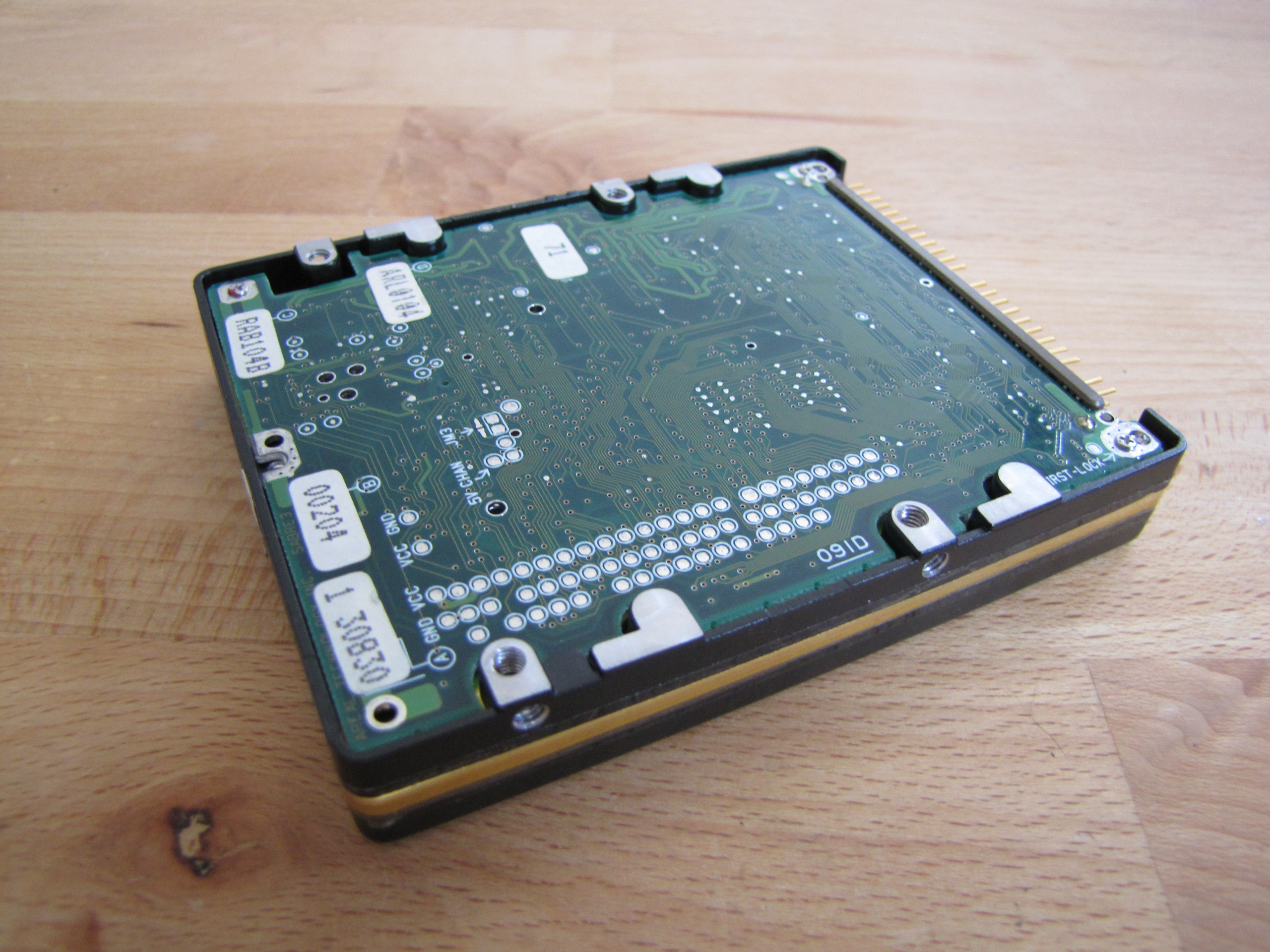
It’s worth stating that the design of these drives is quite stunning, featuring many gold accents & an overall premium feel. Earlier examples of the A260 would have the PCB flipped, with logic facing outwards, where Areal changed this with later revisions of the A260.

As mentioned earlier, the form factor of this drive is slightly odd. Whilst retaining standard 2.5″ mounting & clearly being of the same format, Areal shortened the drive by a fair degree.
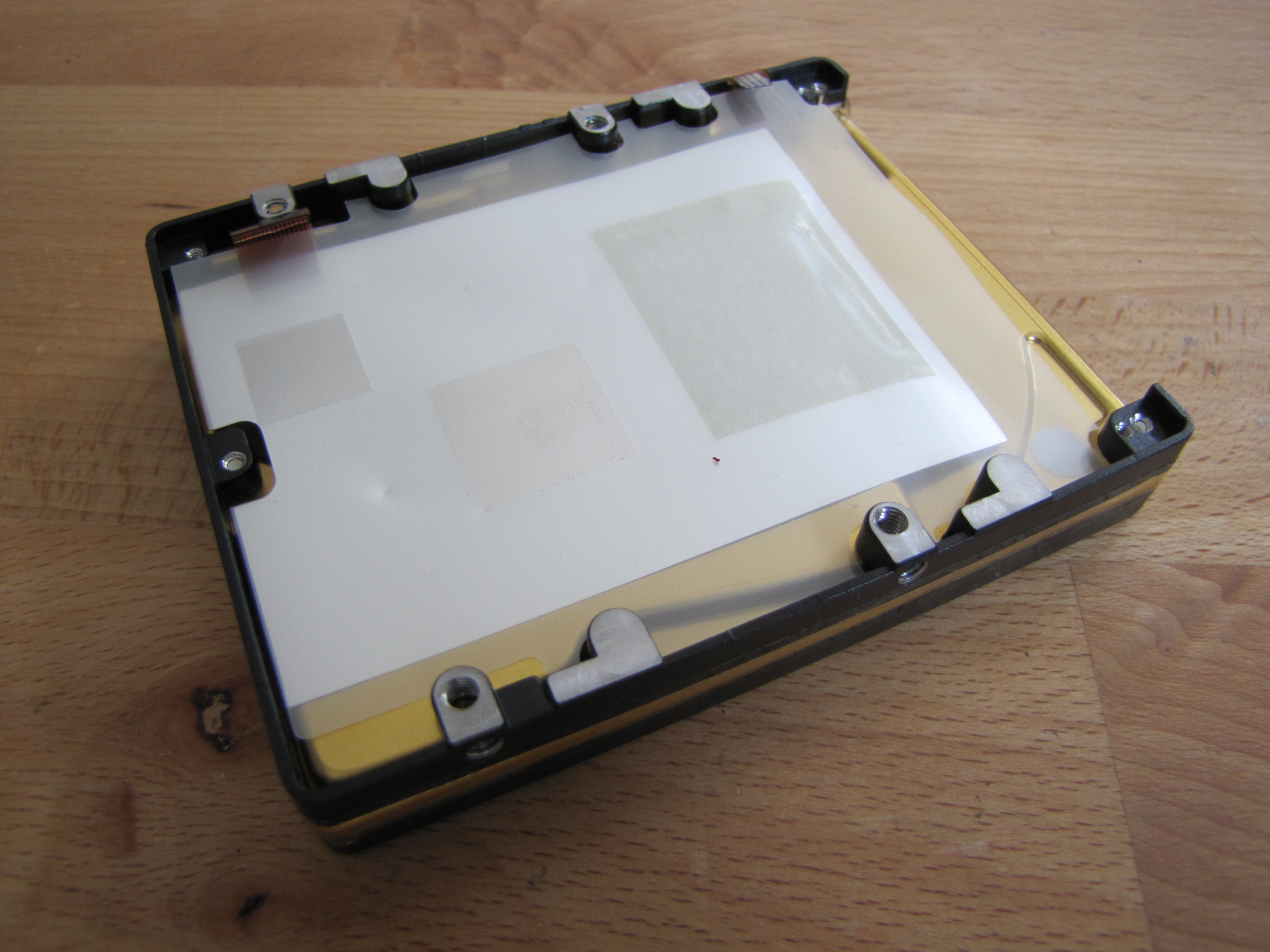
With the PCB removed, we get a first look at the incredibly gold underside. A design choice that certainly seems overkill, but not in a negative way at all.

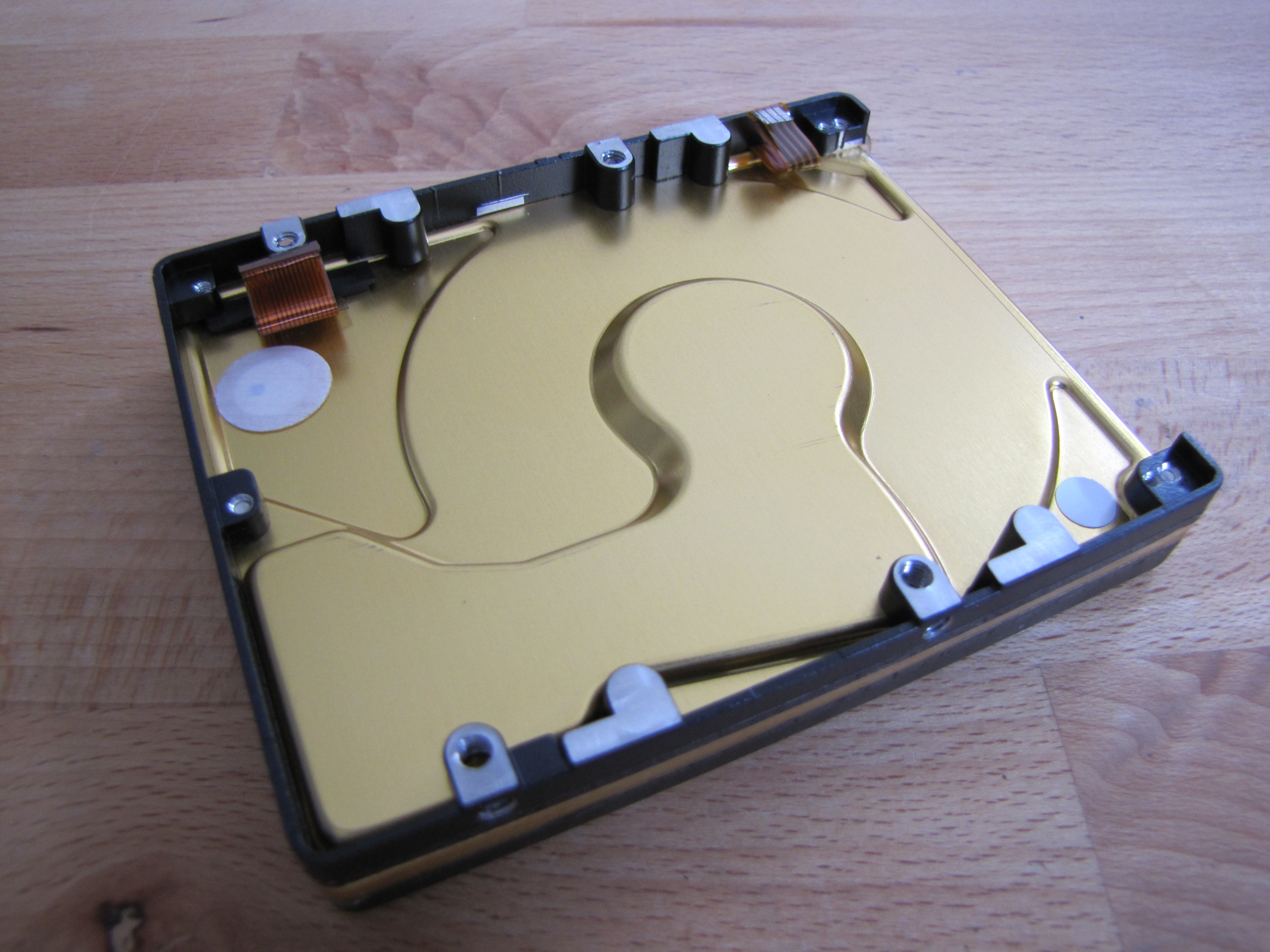

The image above demonstrates how reflective the underside of this drive is, with a very deep gold colour throughout. The air filter is a notable feature of the underside, being placed under the PCB.
Regarding PCB removal on these drives, they’re beyond fiddly to take apart. The two ribbon cables on the left are socketed (seen below) with very little slack. Suffice to say, I don’t recommend taking the board off unless absolutely necessary.
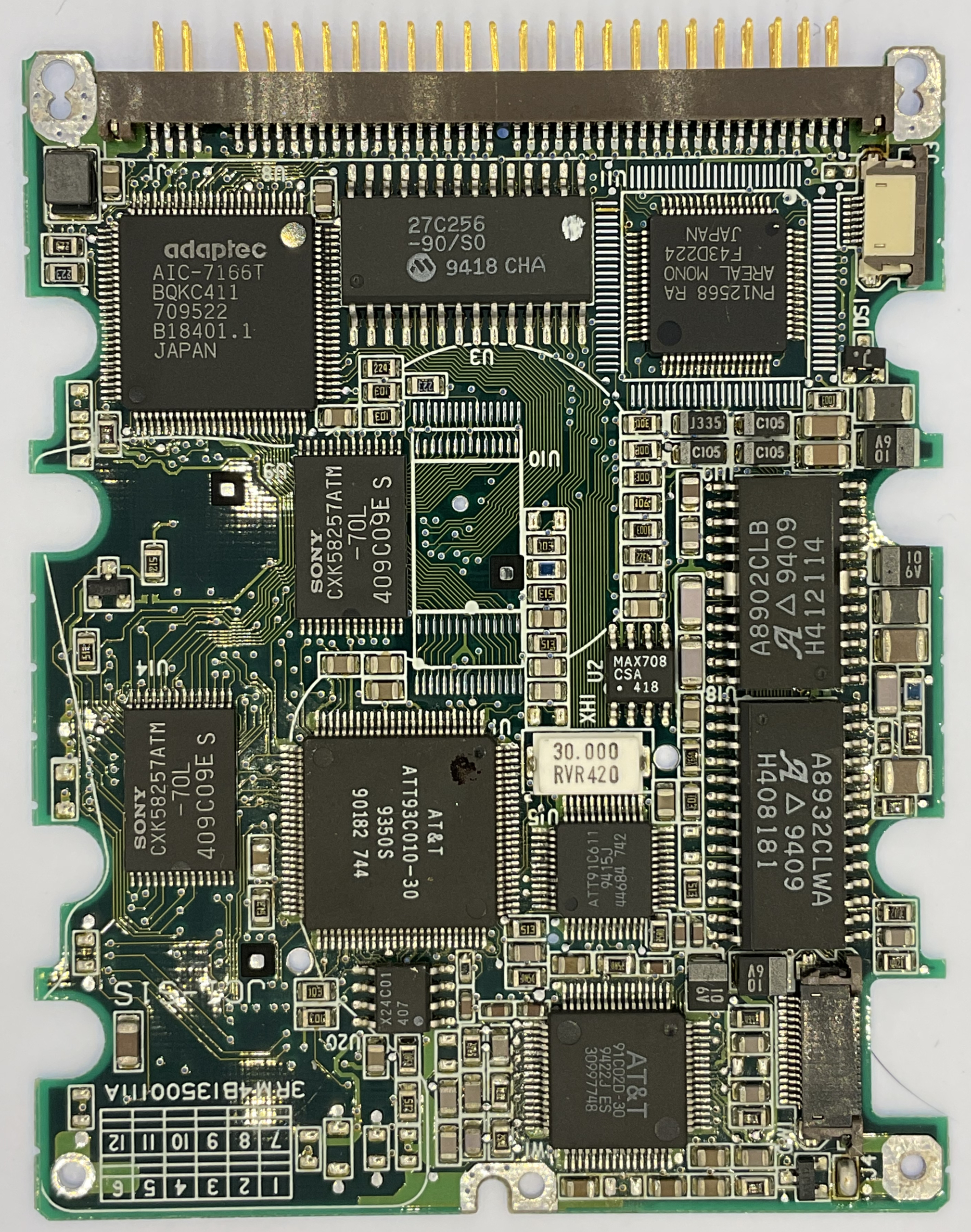
The PCB is fairly loaded, offering some well-known names on the logic side. To the right the two ribbon cable sockets are present, which may further show how difficult this model is to take apart to such a degree.
Adaptec provided the interface controller (top left, U8, AIC-7166T), the 32KB of cache was supplied by Sony (CXK5827ATM, a single 32KB package), with the central microcontroller being a unit from AT&T (U1, ATT93C010-30). There’s only a single chip bearing Areal’s name, seen at the top-left with part number PN12568, being storage.
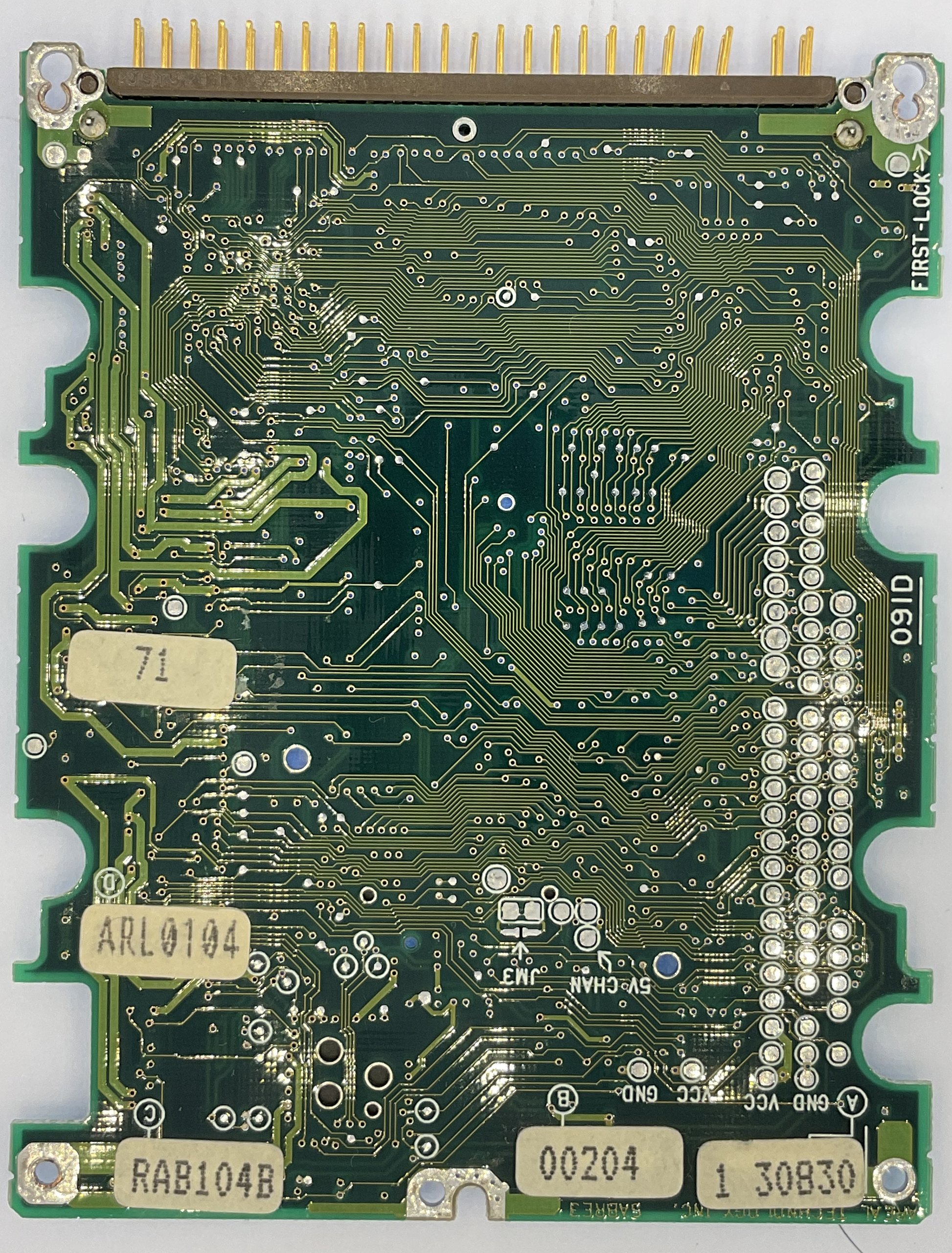
The silkscreen at the bottom suggests these drives have a codename of “Sabre 3”, but of course that’s quite hard to confirm. Aside from this, the PCB provides some useful test points & descriptions.

A real surprise after almost 30 years, alongside no known unformation when regarding how Areal’s drives hold up without prolonged use, this example is in perfect condition. It’s certainly a keeper!

Performance is identical to what Areal claimed these could offer in 1992, with no major surprises concerning track access layout.
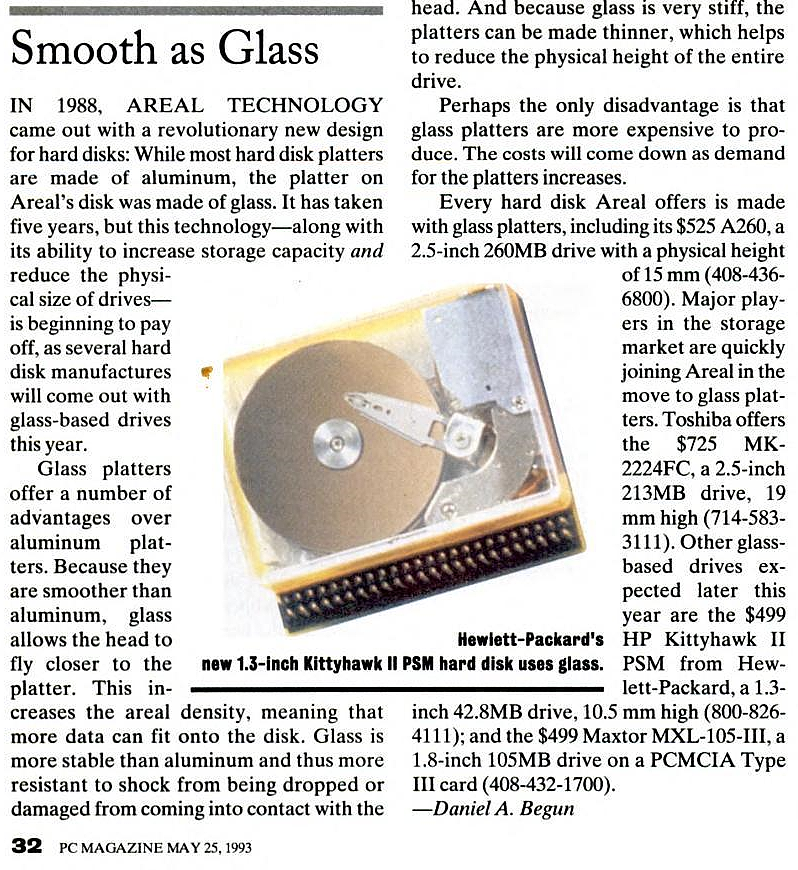
Tragically, Toshiba beat them to the punch with their first 2.5″ drive, the MK1122FC, bringing glass-platter drives to the masses & beyond (where all of Toshiba’s 2.5″ drives, at least through the 90’s, are glass-platter based). Many thanks to the commentor below, Toshiba did not beat Areal to the punch, which is certainly an impressive feat!
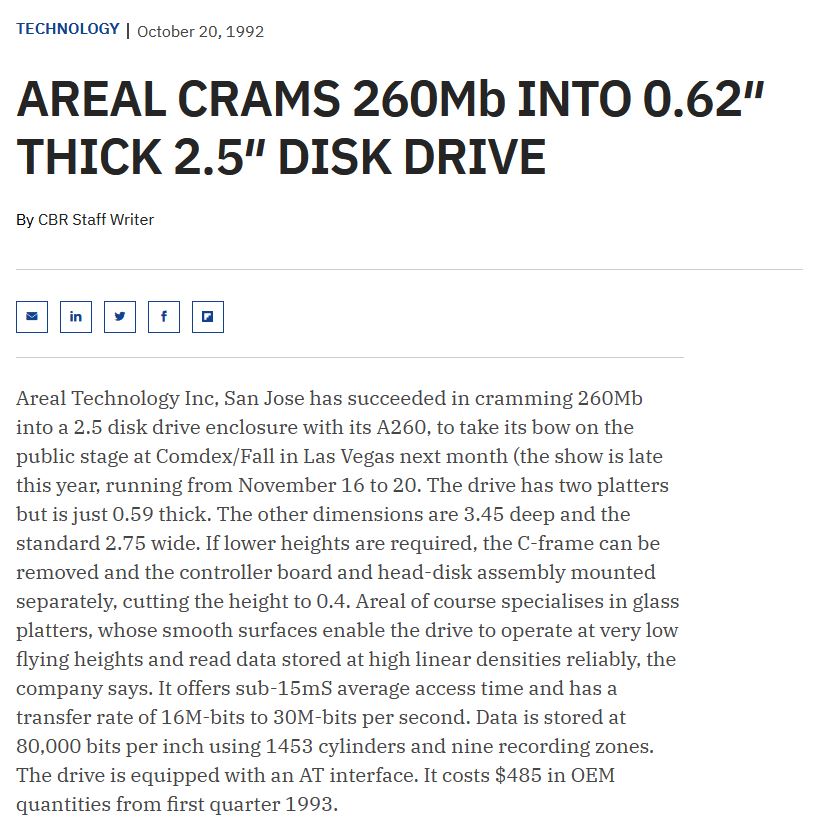
Areal Technology fell from grace shortly after this drive was manufactured, departing from the hard drive industry. Sadly, while this story repeats itself with so many other past industry competitors, the loss of Areal was certainly quite a shame given their innovation in the space.
If you missed the video I made on this drive, you can find it here:
References:
[1] PC Mag (1993) 25th May 1993, 460 pages, Vol. 12, No. 10, ISSN 0888-8507, Published by Ziff Davis inc., Acquired from: https://books.google.nl/books?id=0HJN4wxEVI4C
[2] TechMonitor.ai (1992) 20th October 1992, CBR Staff, “Areal Crams 260MB into 0.62″ Thick 2.5″ Disk Drive”, Acquired from: https://techmonitor.ai/technology/areal_crams_260mb_into_062_thick_25_disk_drive
Areal actually beat Toshiba to the punch — by a very thin window — with their MD-2060 drive. Sanyo poured millions into the company and signed a contract to become their primary manufacturer in November 1990. They were able to achieve volume production in February 1991, a month before Toshiba with their MK2224FC. But Toshiba’s factories were better equipped and cranked out more drives than Sanyo per month, leading to more widespread adoption. I recently wrote the Wikipedia page for Areal, which has a very neat backstory: https://en.wikipedia.org/wiki/Areal_Technology
Nice article BTW. I used a screengrab from your video for the WP page.
Thanks so much for your comment! Fascinating info, you’ve done an incredible job on documenting Areal for all to see. Honestly, huge kudos! Thanks a ton for letting me know of my inaccuracy, I’ll definitely make sure to edit all of my applicable articles accordingly! (although it may be a few weeks until I have time to do so) I really appreciate it.
Very sorry it took so long for me to see this comment! I’ll be covering an MD2085 sometime in the next few months when time allows, so perhaps pictures of that may come in handy, but I have no clue haha. Thanks again!